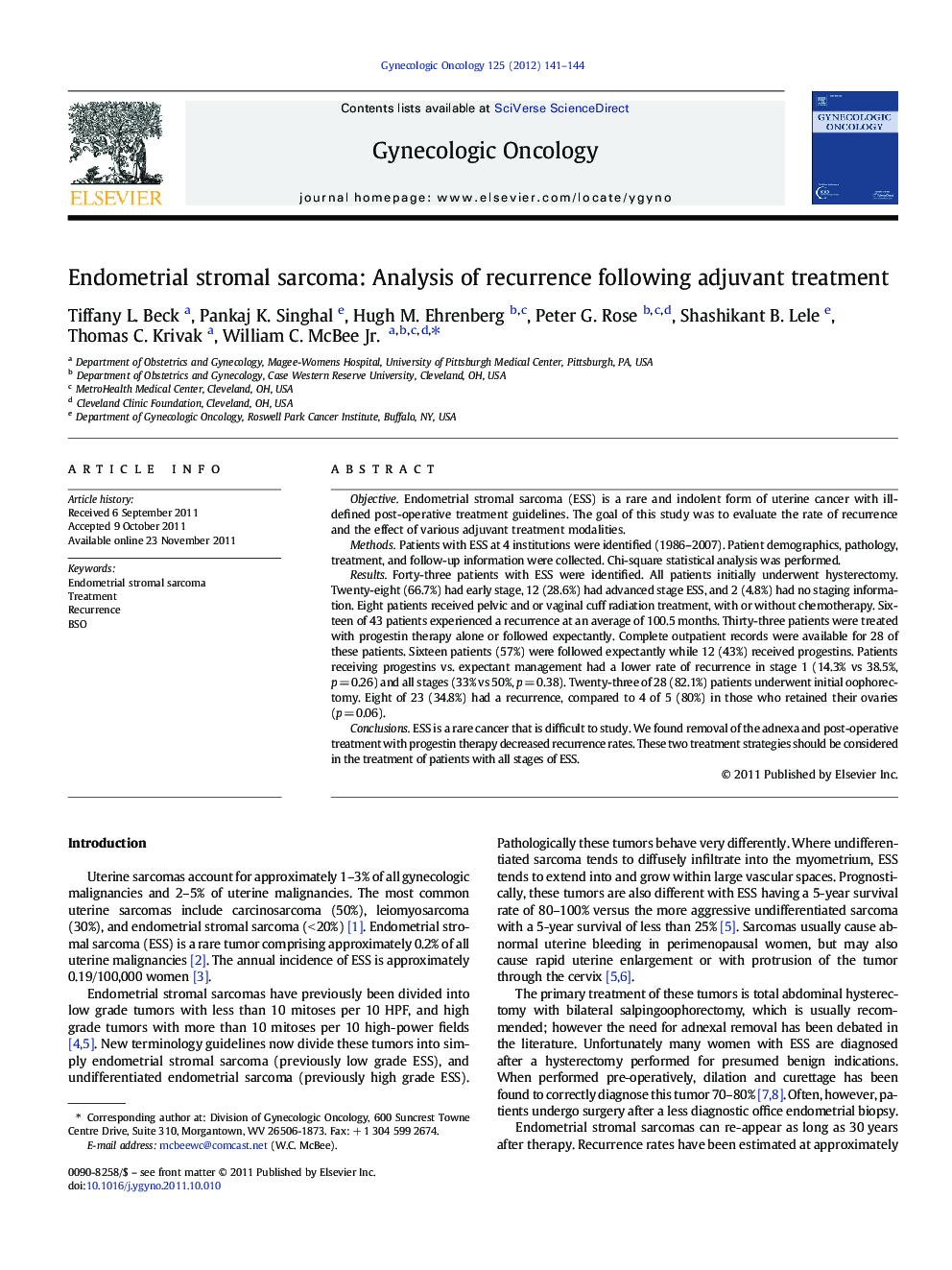| Article ID | Journal | Published Year | Pages | File Type |
|---|---|---|---|---|
| 3945260 | Gynecologic Oncology | 2012 | 4 Pages |
ObjectiveEndometrial stromal sarcoma (ESS) is a rare and indolent form of uterine cancer with ill-defined post-operative treatment guidelines. The goal of this study was to evaluate the rate of recurrence and the effect of various adjuvant treatment modalities.MethodsPatients with ESS at 4 institutions were identified (1986–2007). Patient demographics, pathology, treatment, and follow-up information were collected. Chi-square statistical analysis was performed.ResultsForty-three patients with ESS were identified. All patients initially underwent hysterectomy. Twenty-eight (66.7%) had early stage, 12 (28.6%) had advanced stage ESS, and 2 (4.8%) had no staging information. Eight patients received pelvic and or vaginal cuff radiation treatment, with or without chemotherapy. Sixteen of 43 patients experienced a recurrence at an average of 100.5 months. Thirty-three patients were treated with progestin therapy alone or followed expectantly. Complete outpatient records were available for 28 of these patients. Sixteen patients (57%) were followed expectantly while 12 (43%) received progestins. Patients receiving progestins vs. expectant management had a lower rate of recurrence in stage 1 (14.3% vs 38.5%, p = 0.26) and all stages (33% vs 50%, p = 0.38). Twenty-three of 28 (82.1%) patients underwent initial oophorectomy. Eight of 23 (34.8%) had a recurrence, compared to 4 of 5 (80%) in those who retained their ovaries (p = 0.06).ConclusionsESS is a rare cancer that is difficult to study. We found removal of the adnexa and post-operative treatment with progestin therapy decreased recurrence rates. These two treatment strategies should be considered in the treatment of patients with all stages of ESS.
► Endometrial stromal sarcoma is a rare and indolent disease prone to late recurrence. ESS often presents in perimenopausal women as abnormal uterine bleeding. ► Primary treatment is hysterectomy with complete resection of disease. Bilateral salpingoophorectomy at time of initial surgery may reduce recurrence risk. ► Postoperative management is poorly defined due to the rarity of disease. Adjuvant progestin therapy may reduce recurrence risk.
